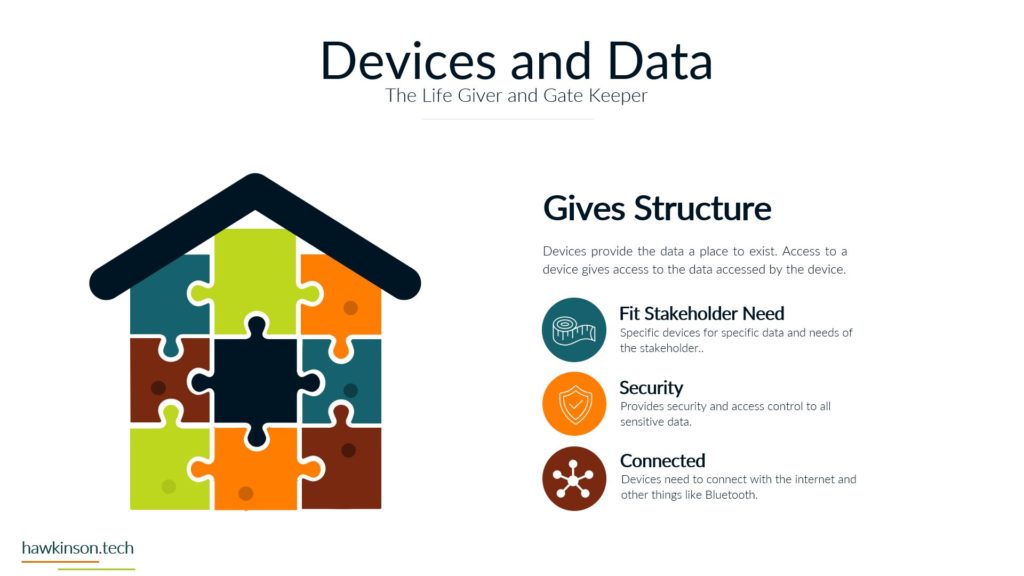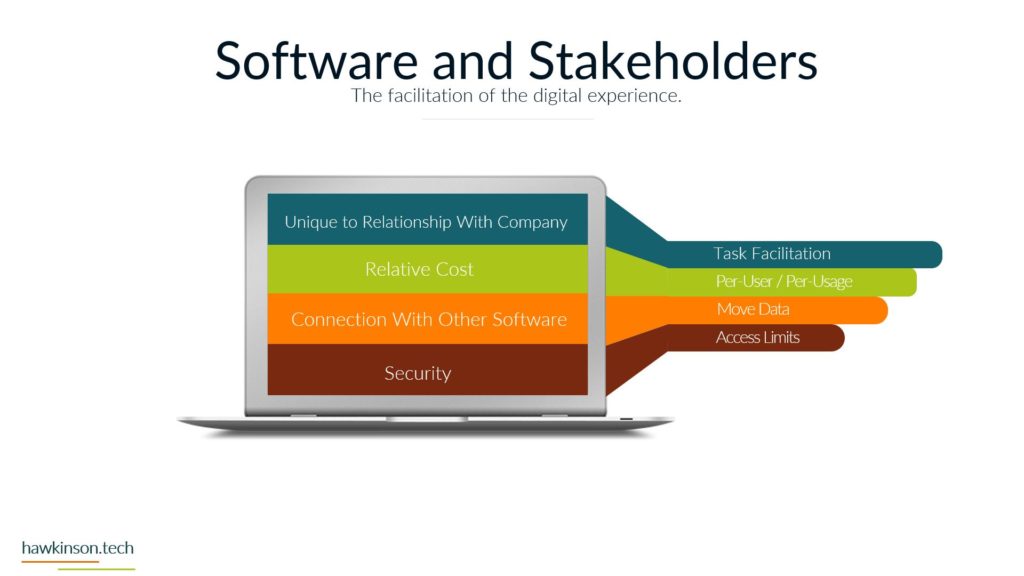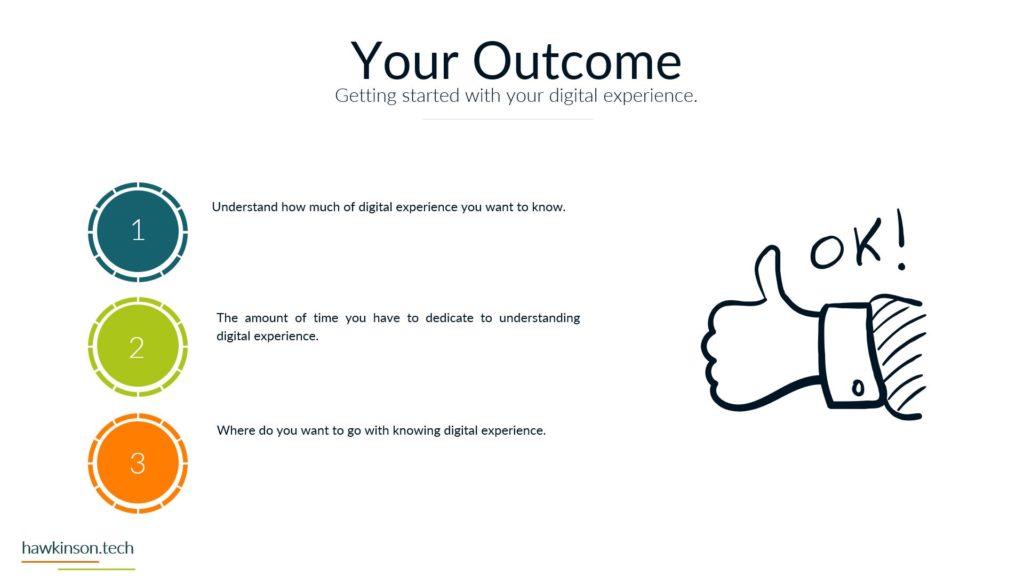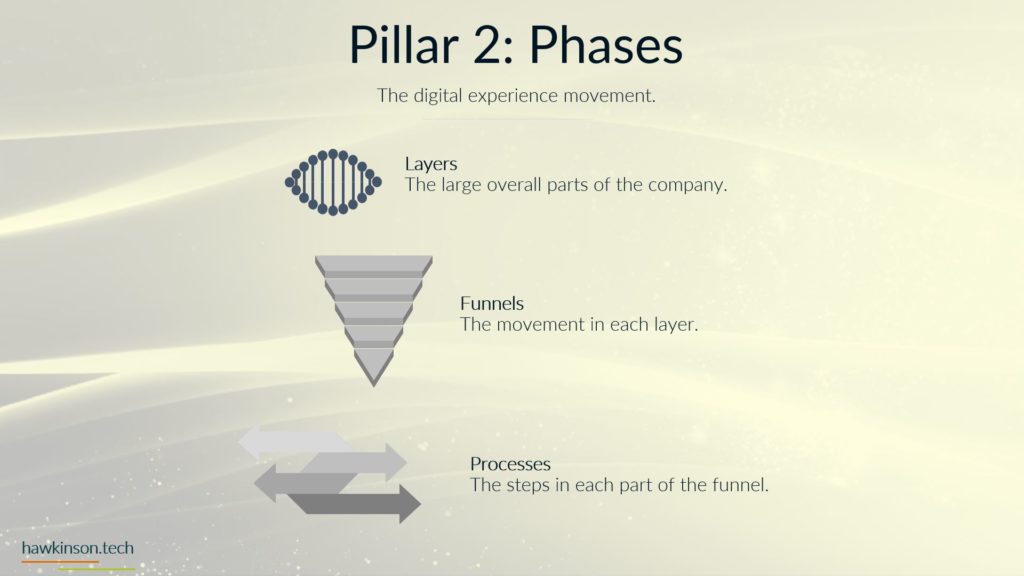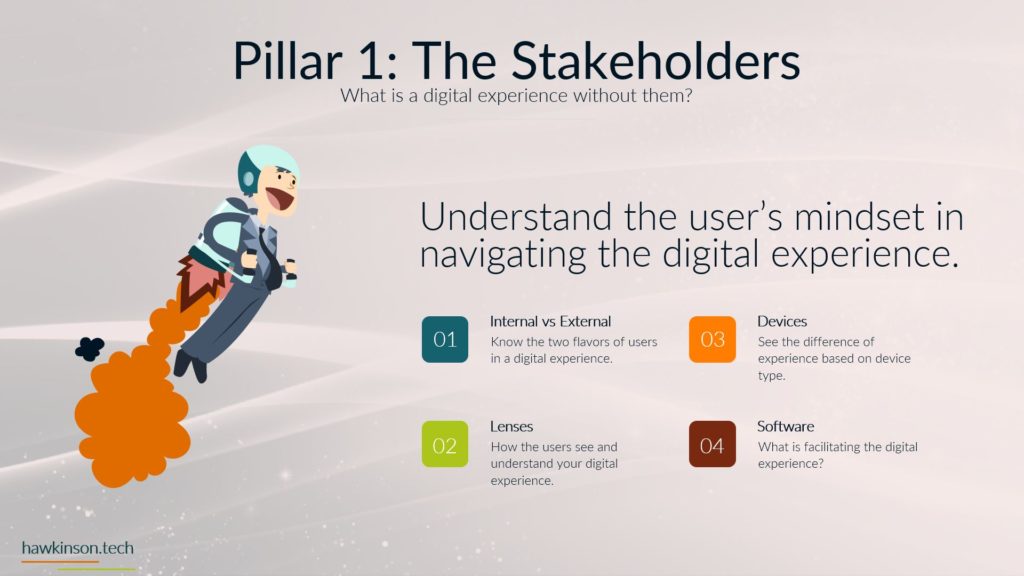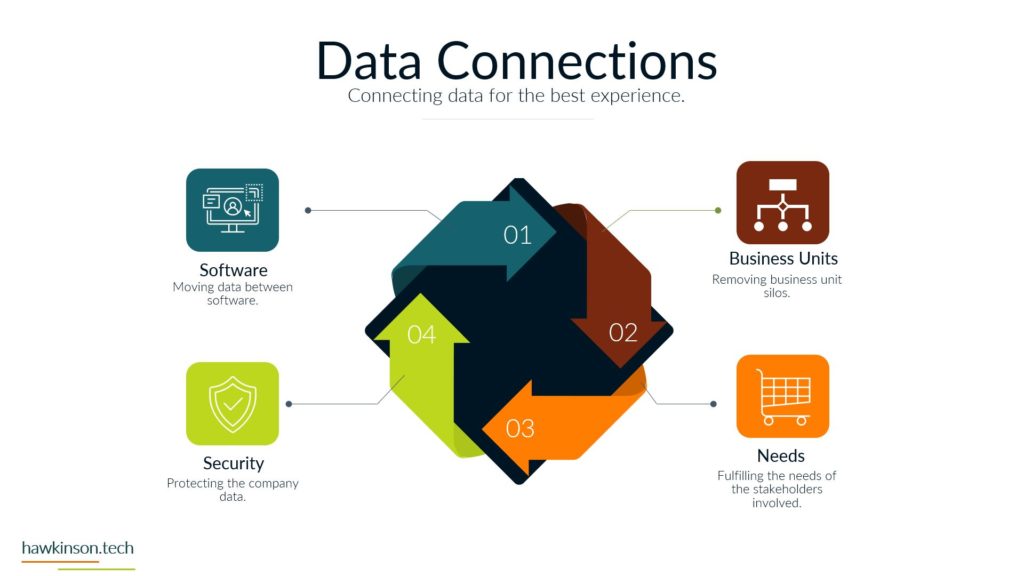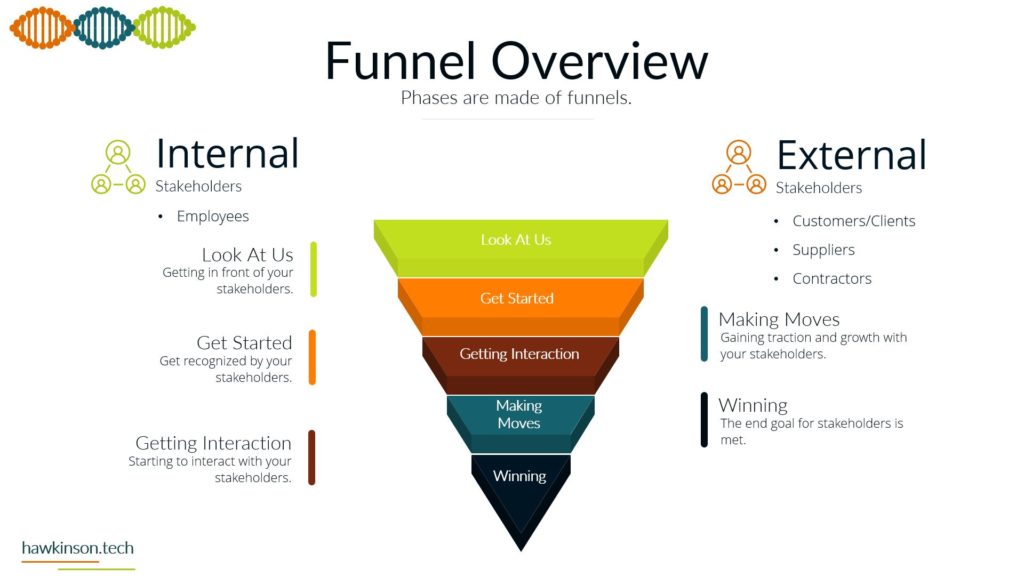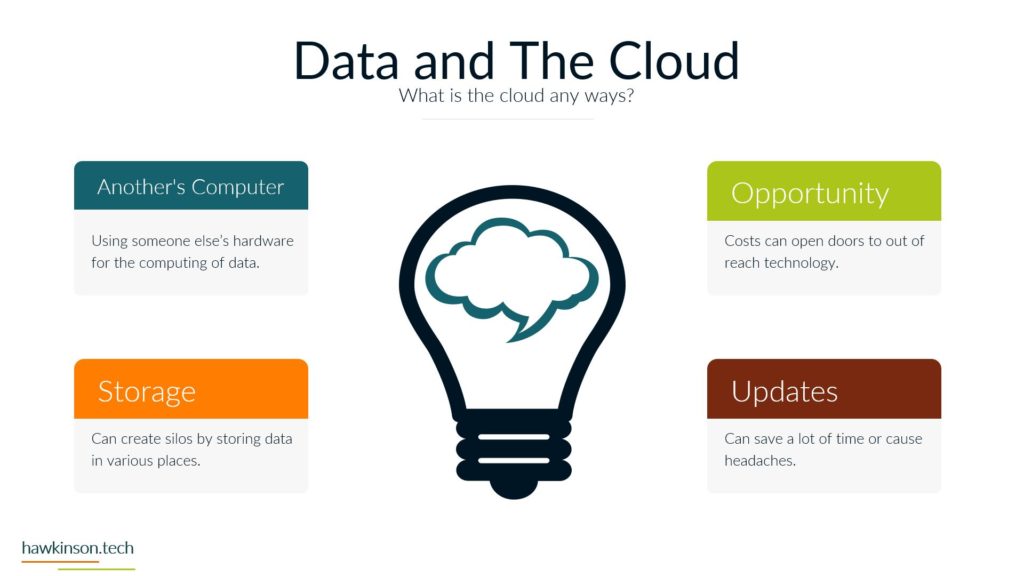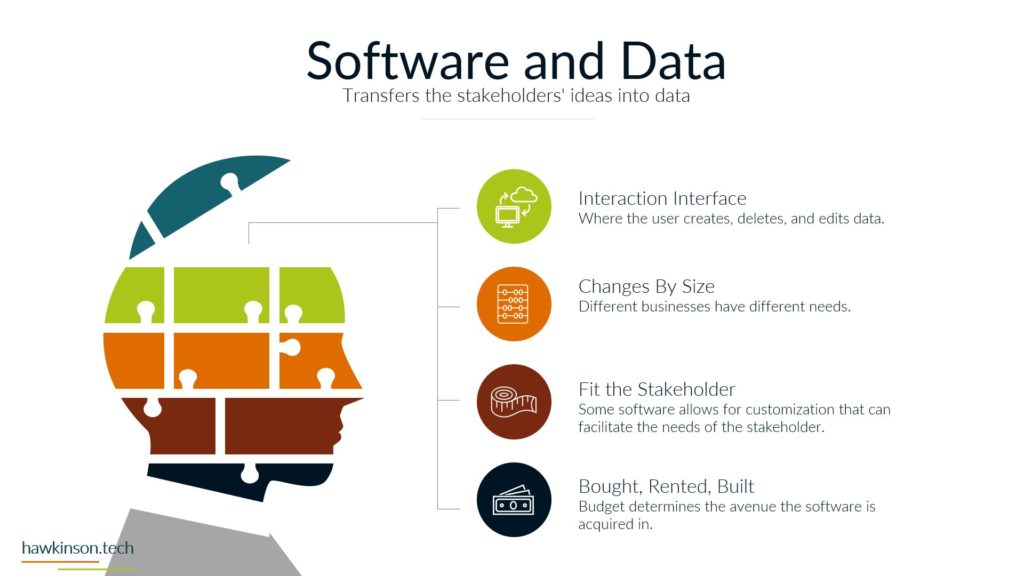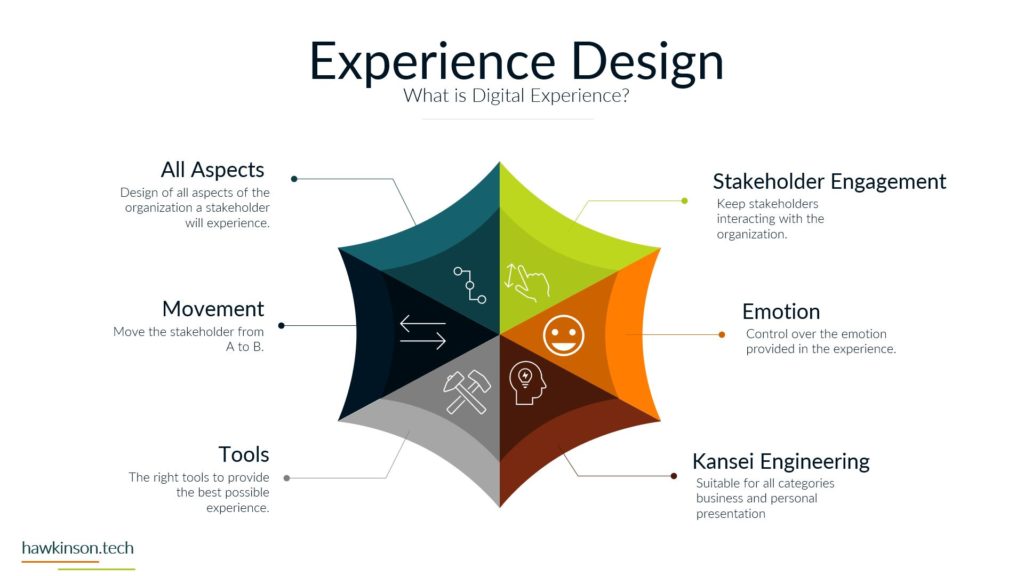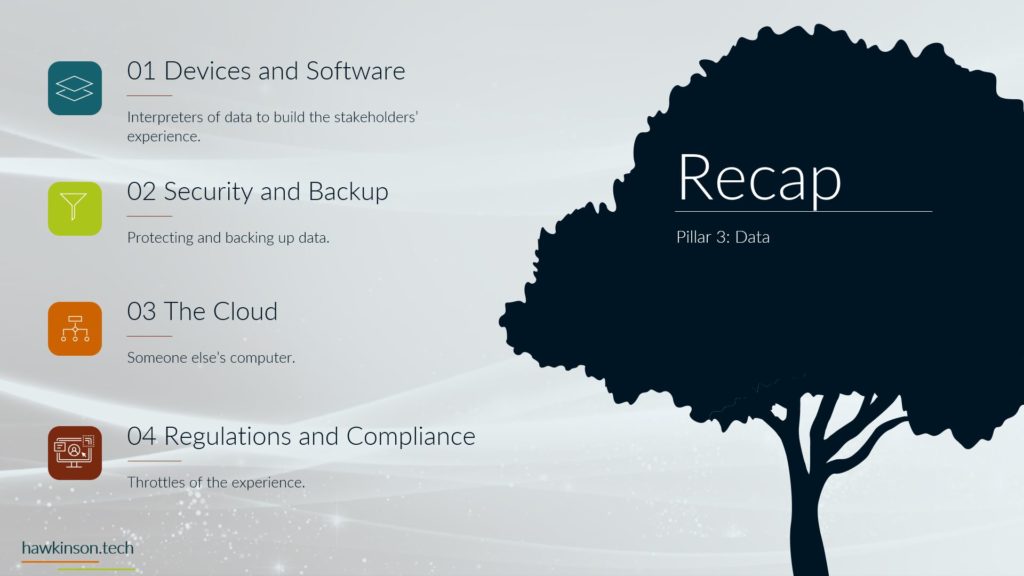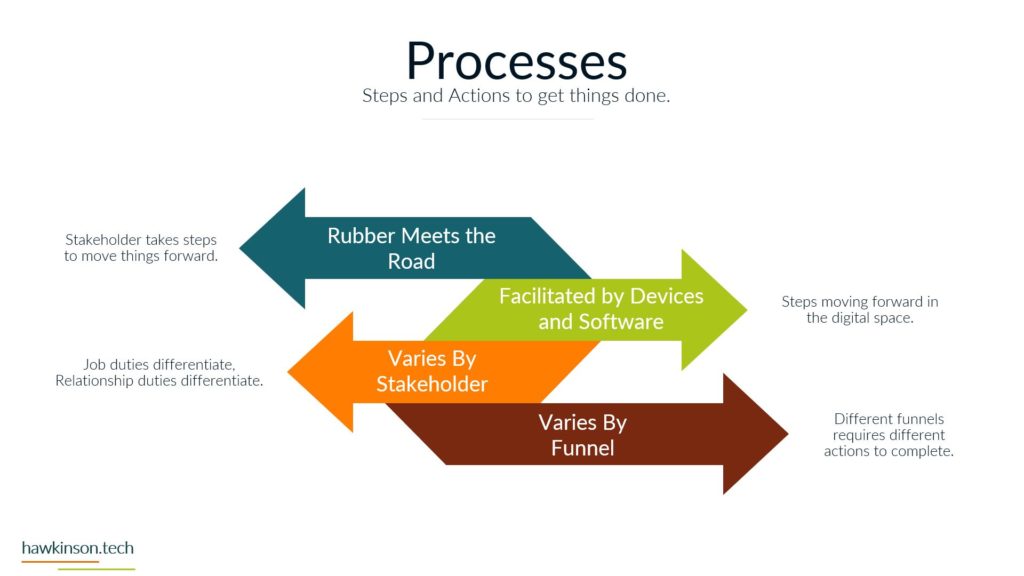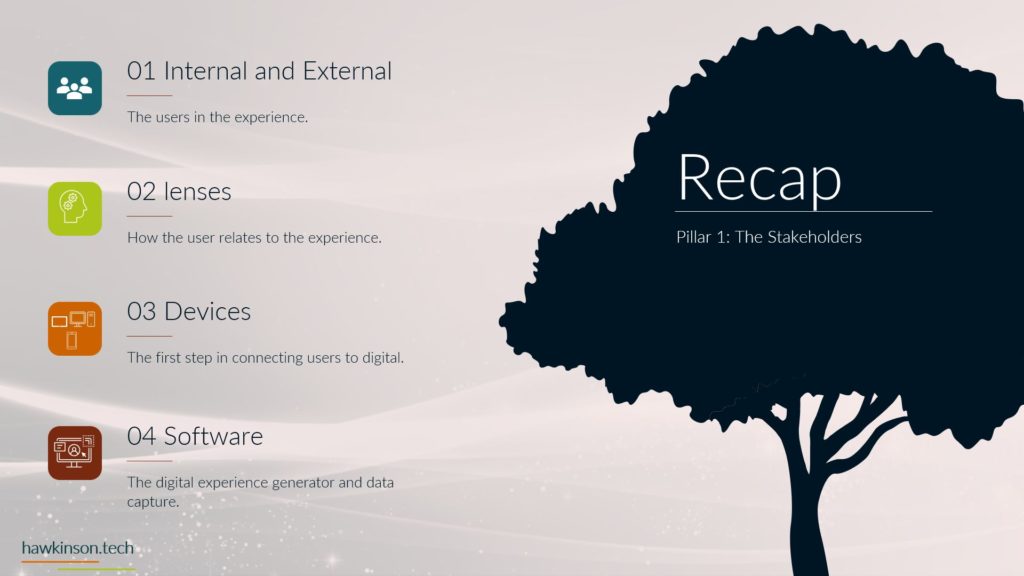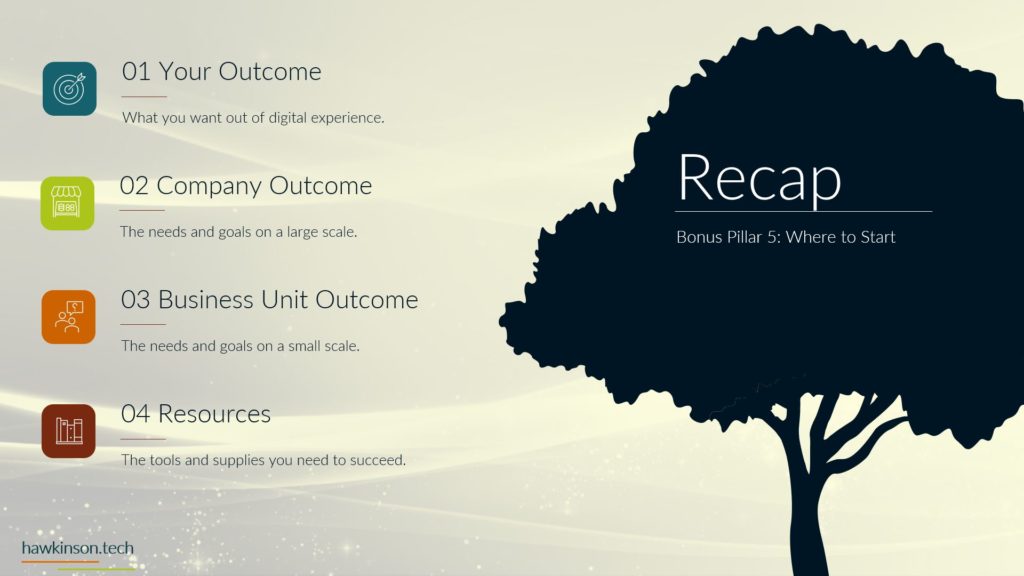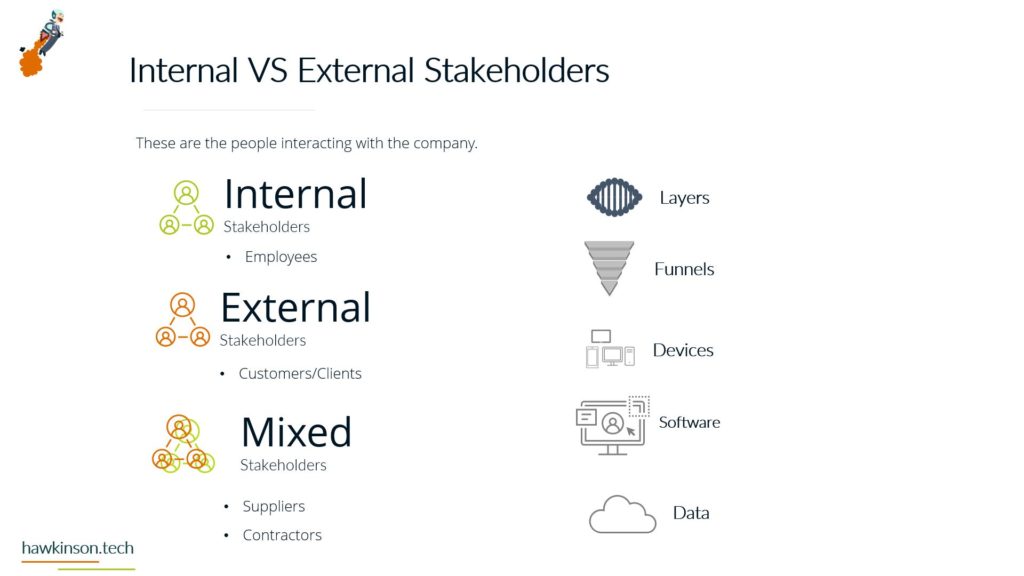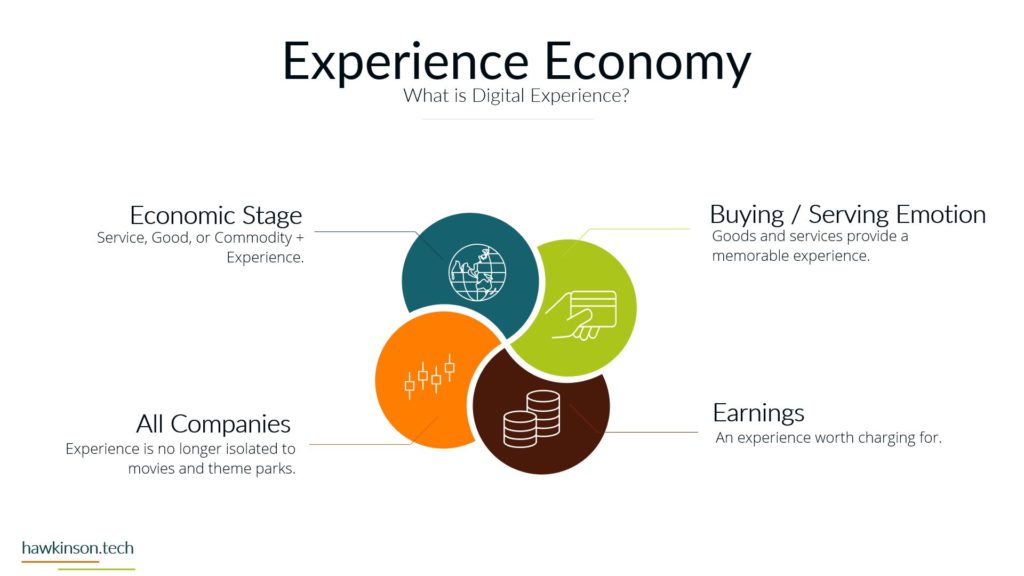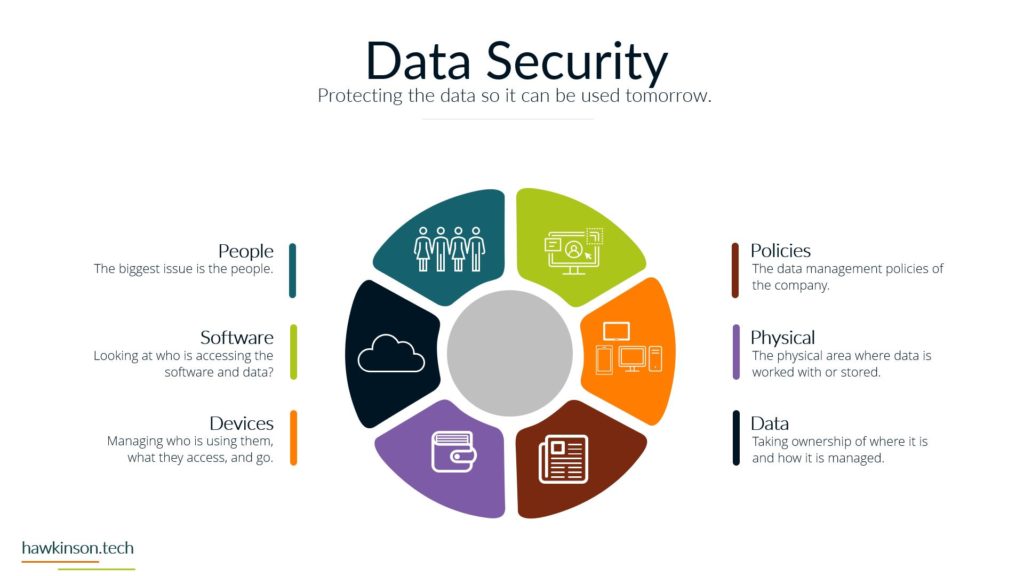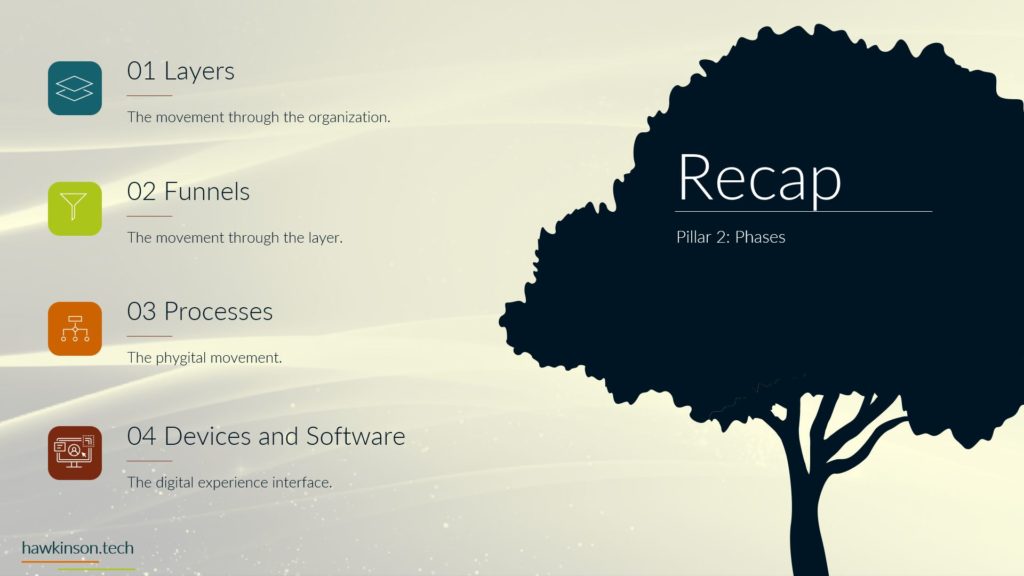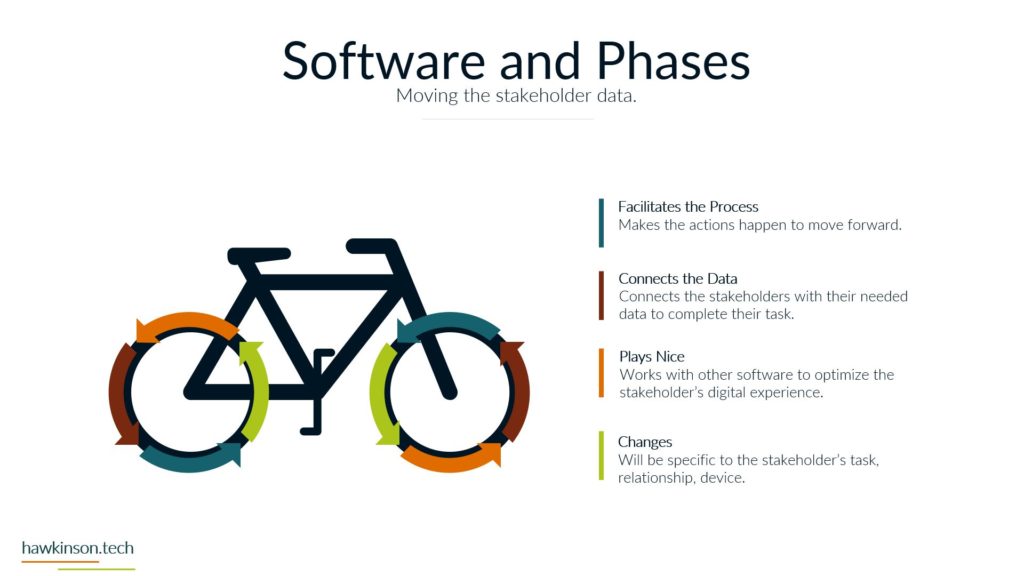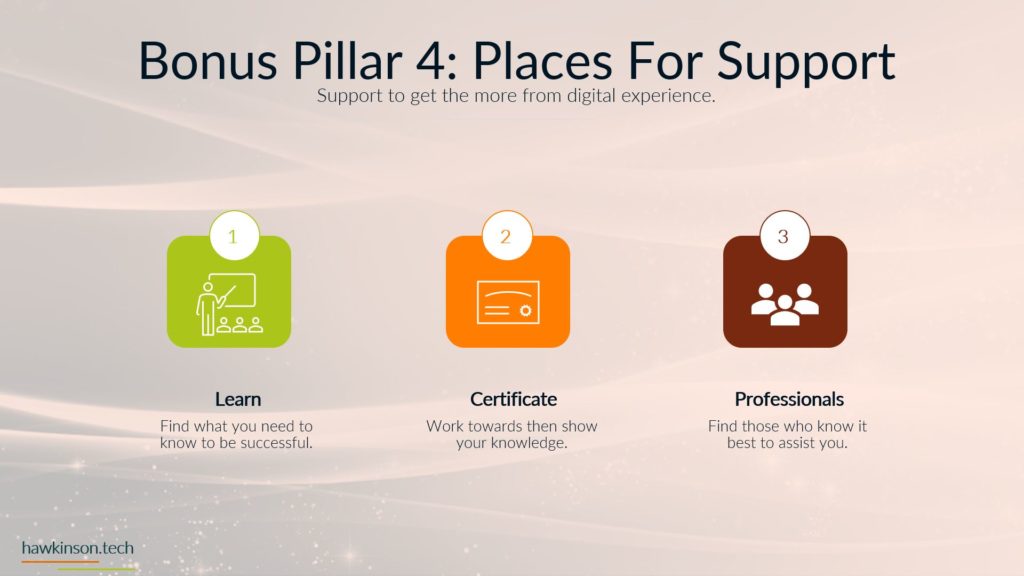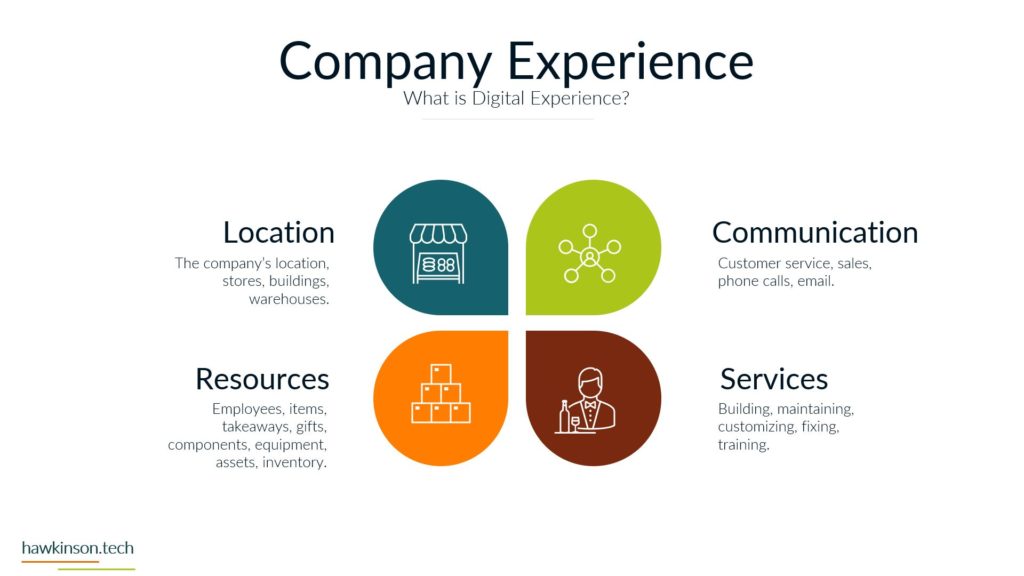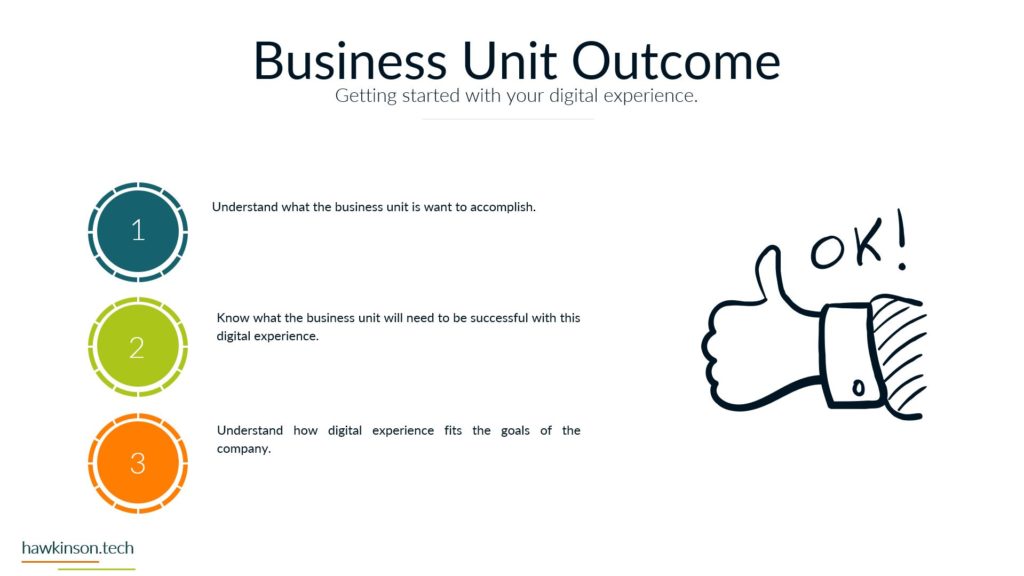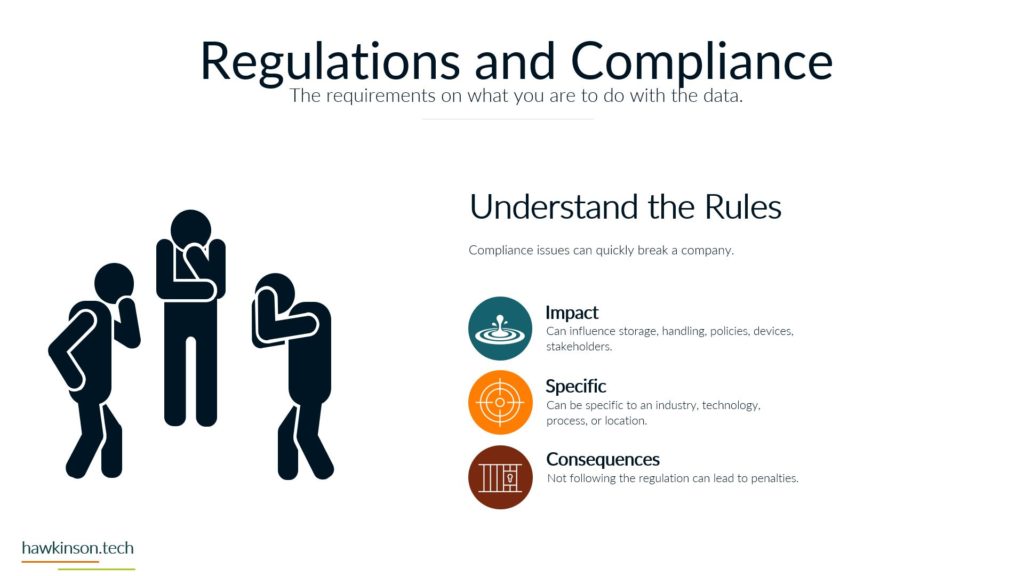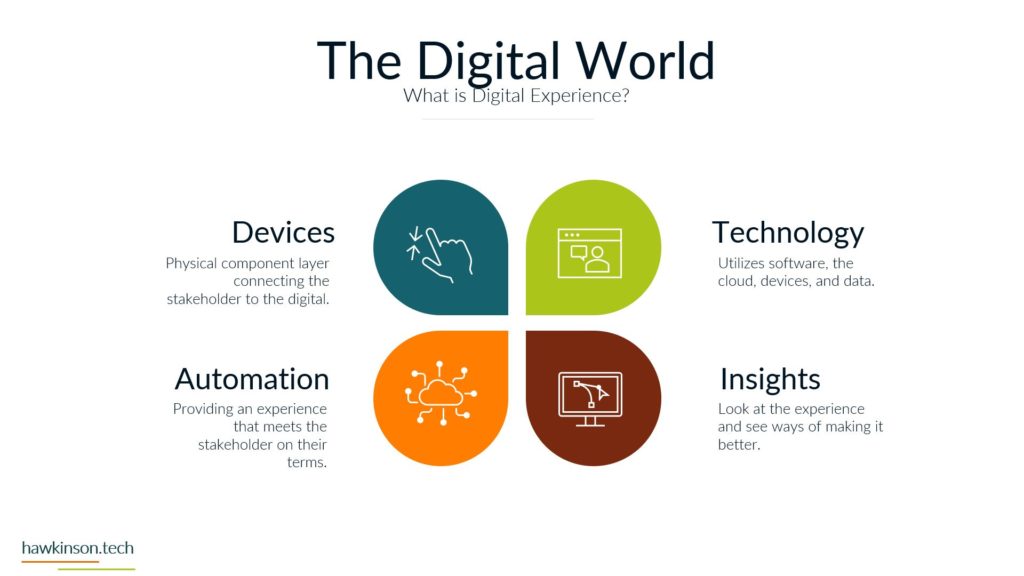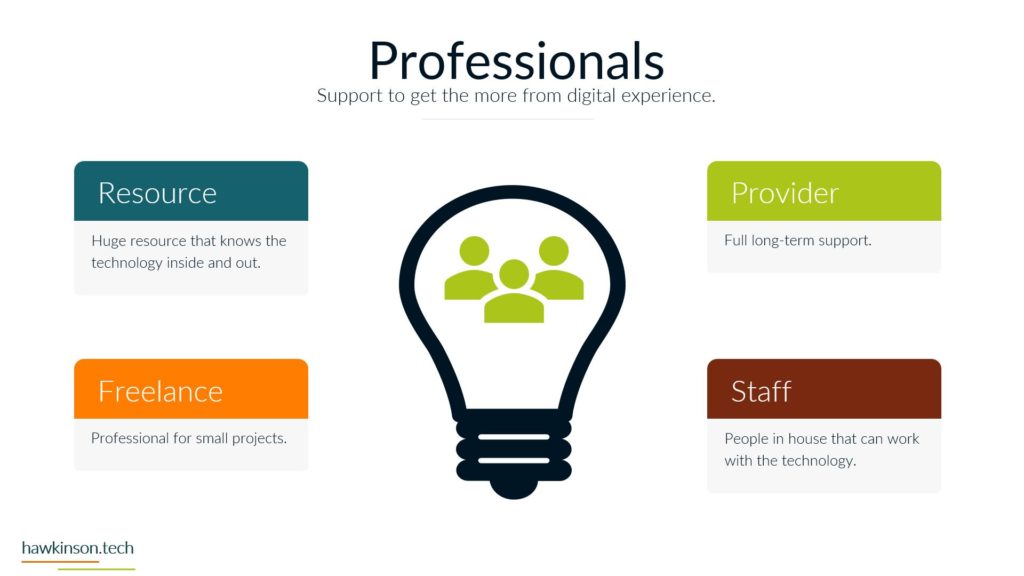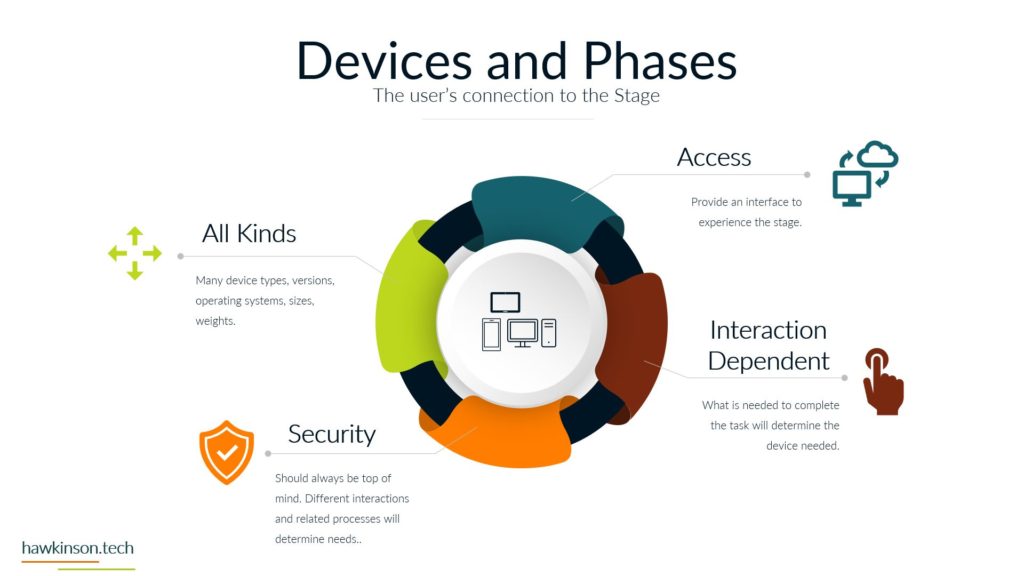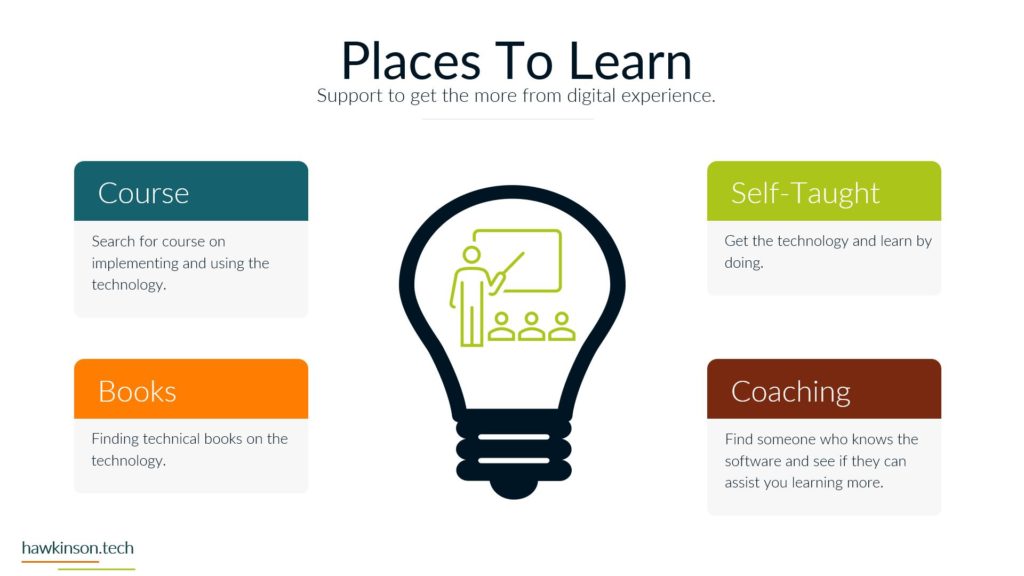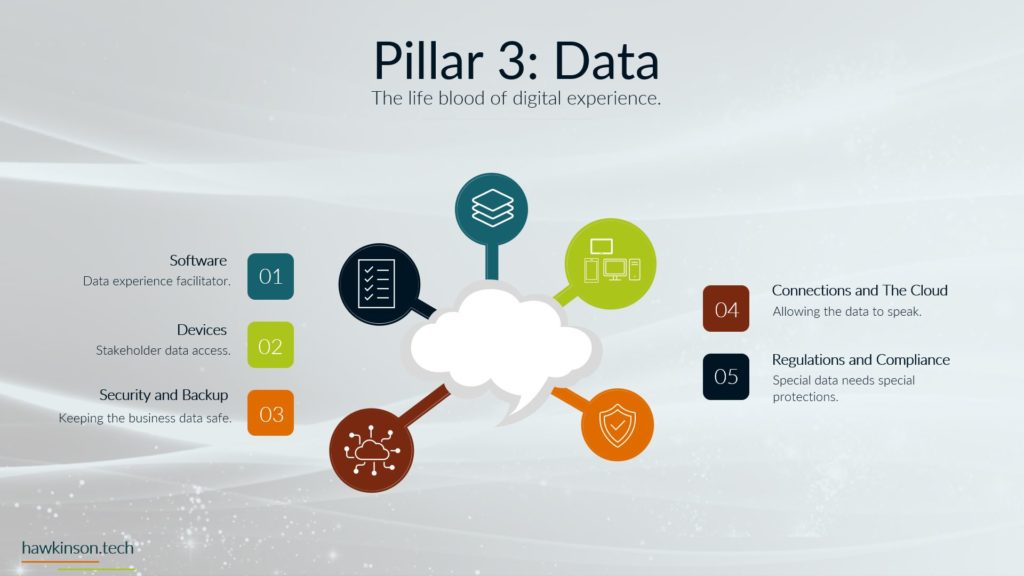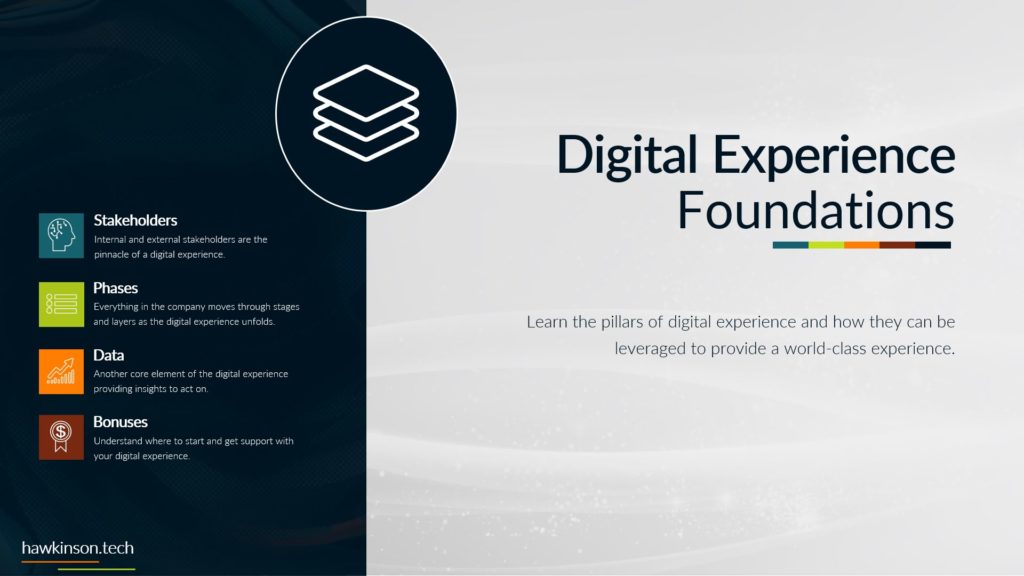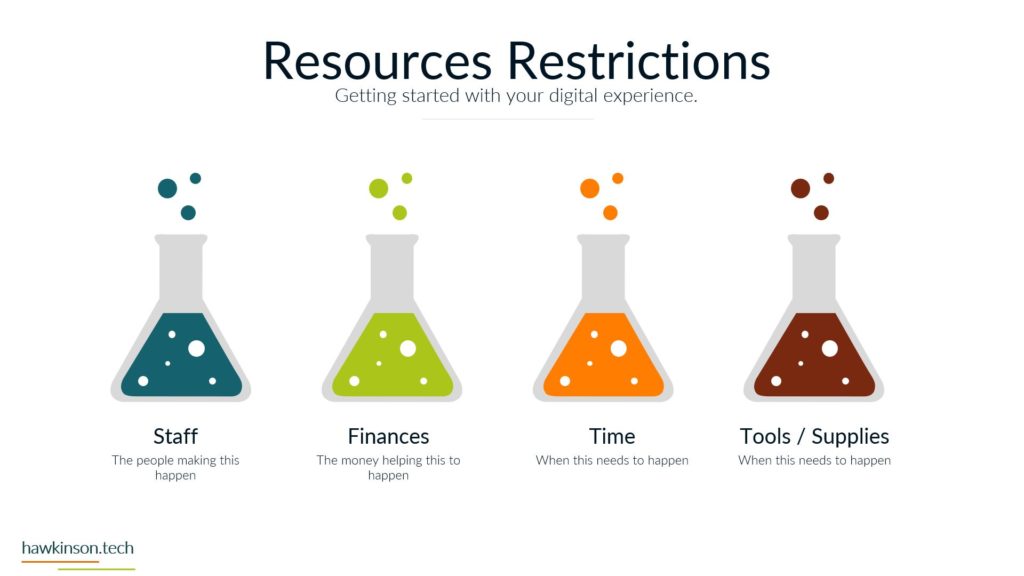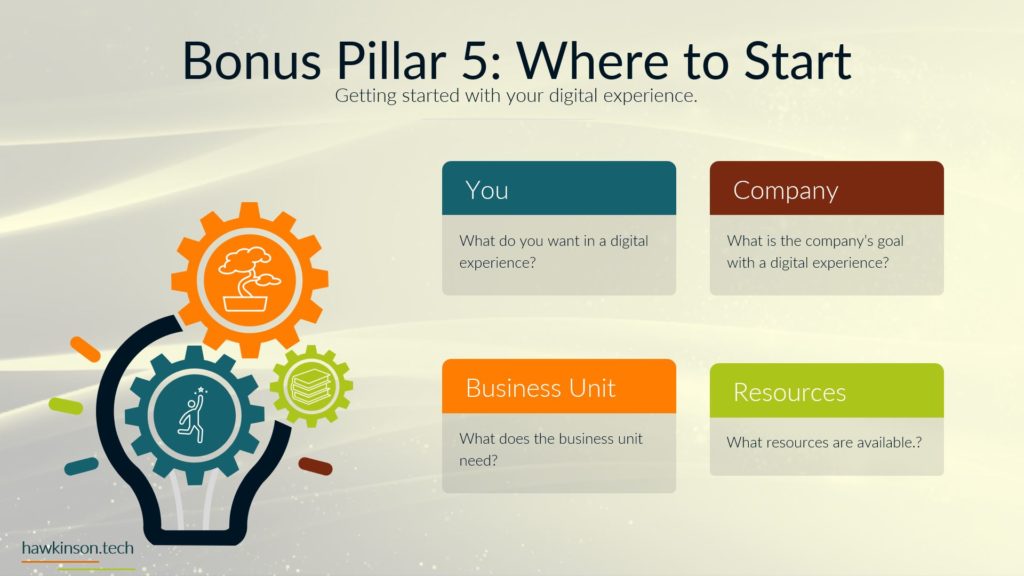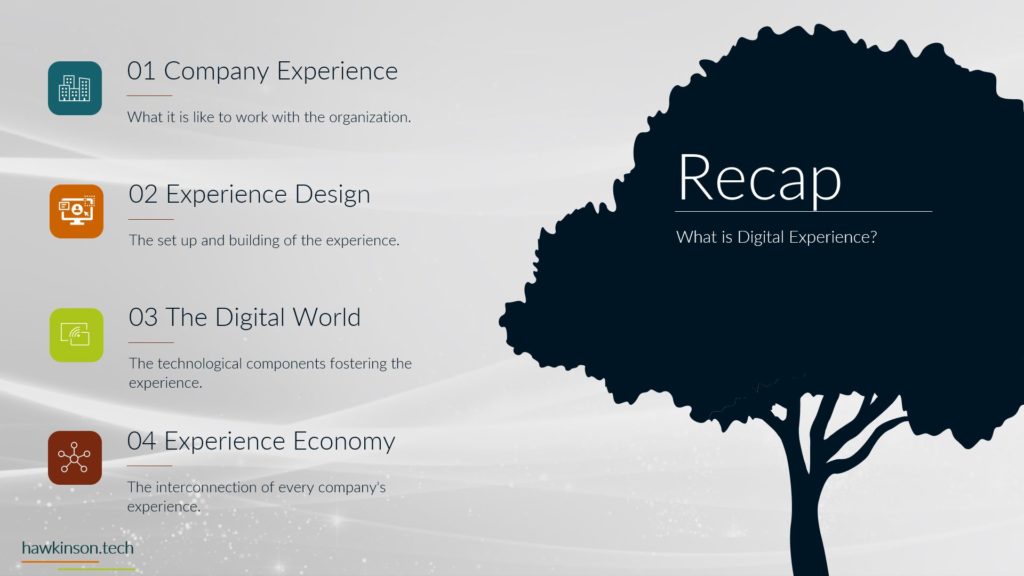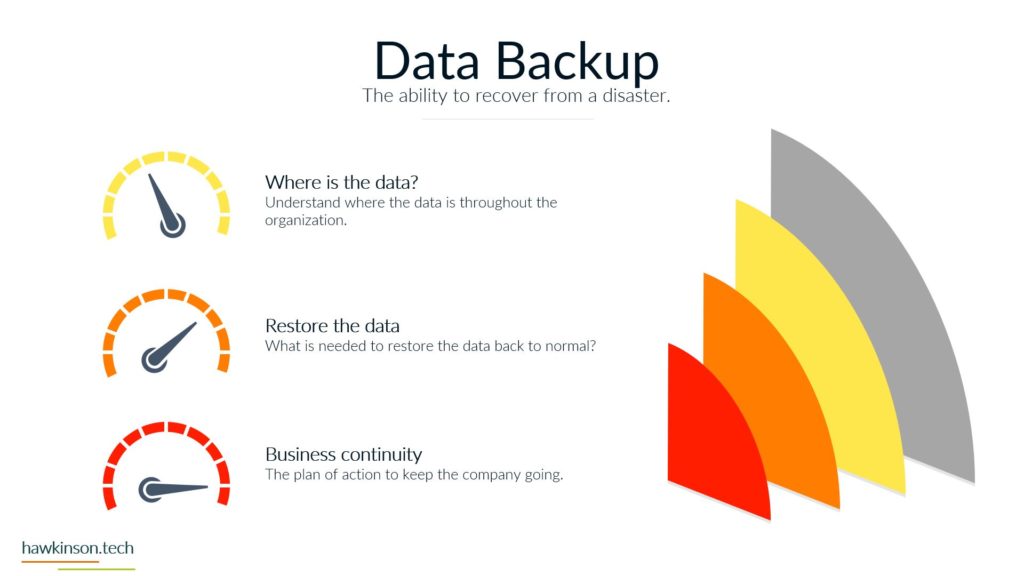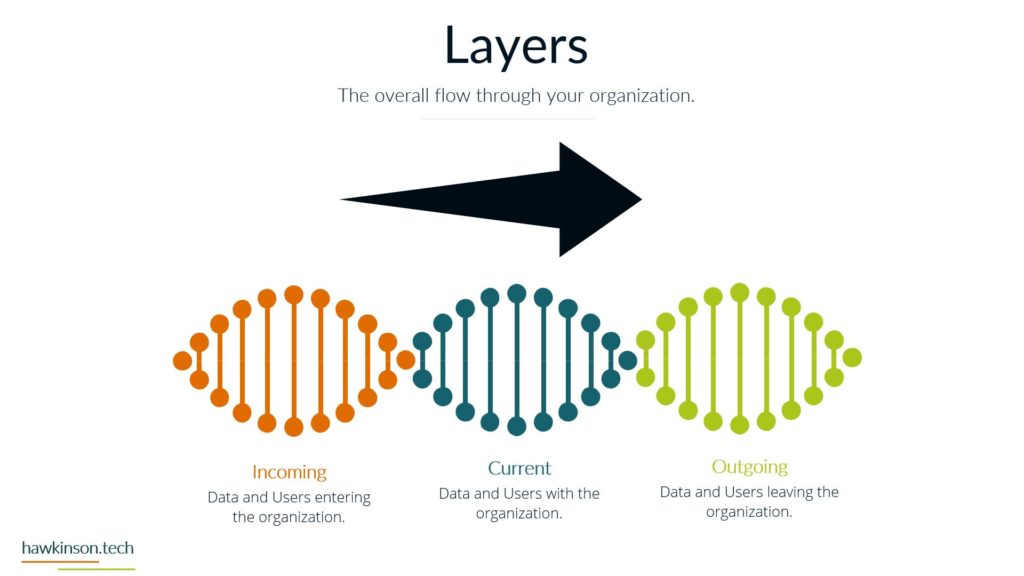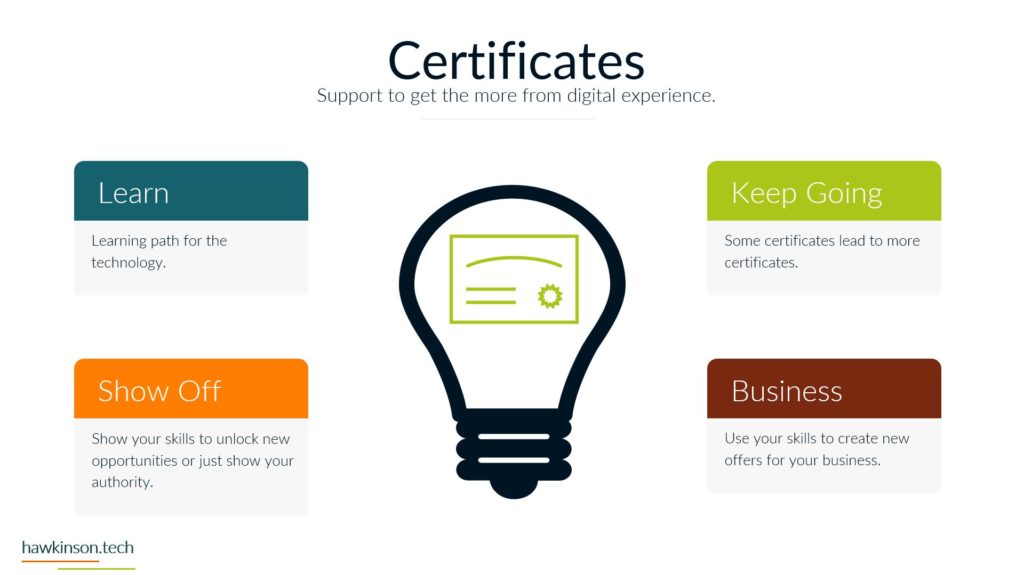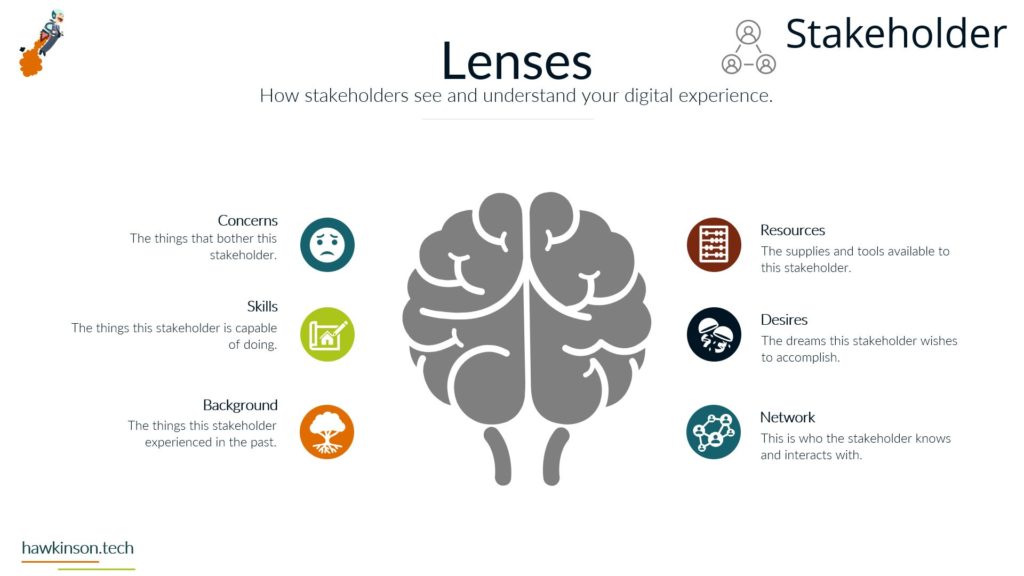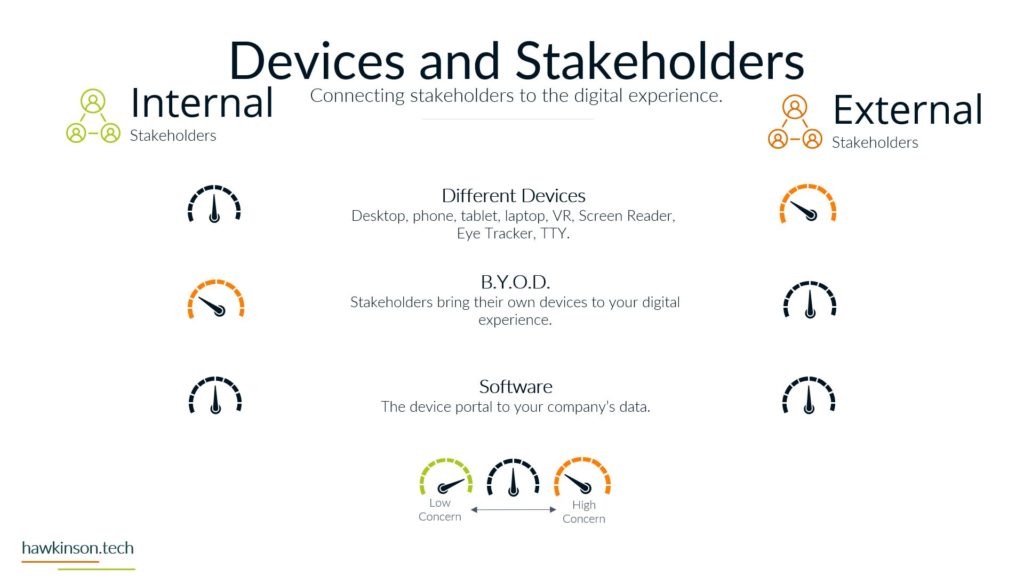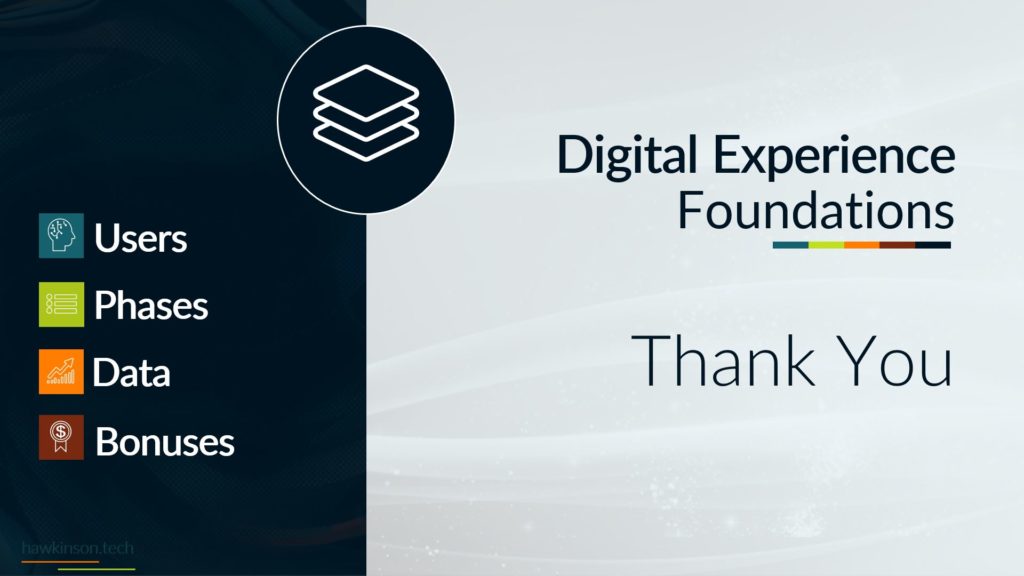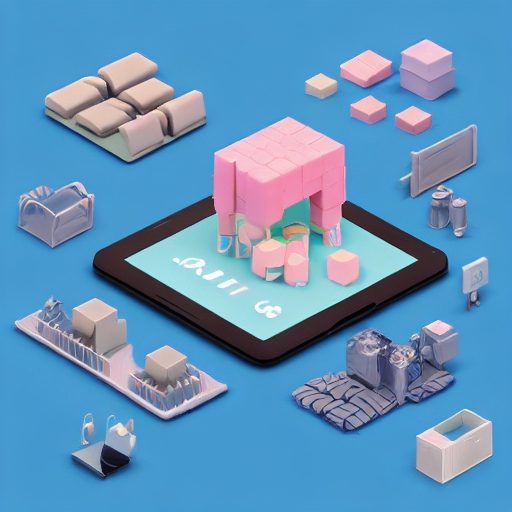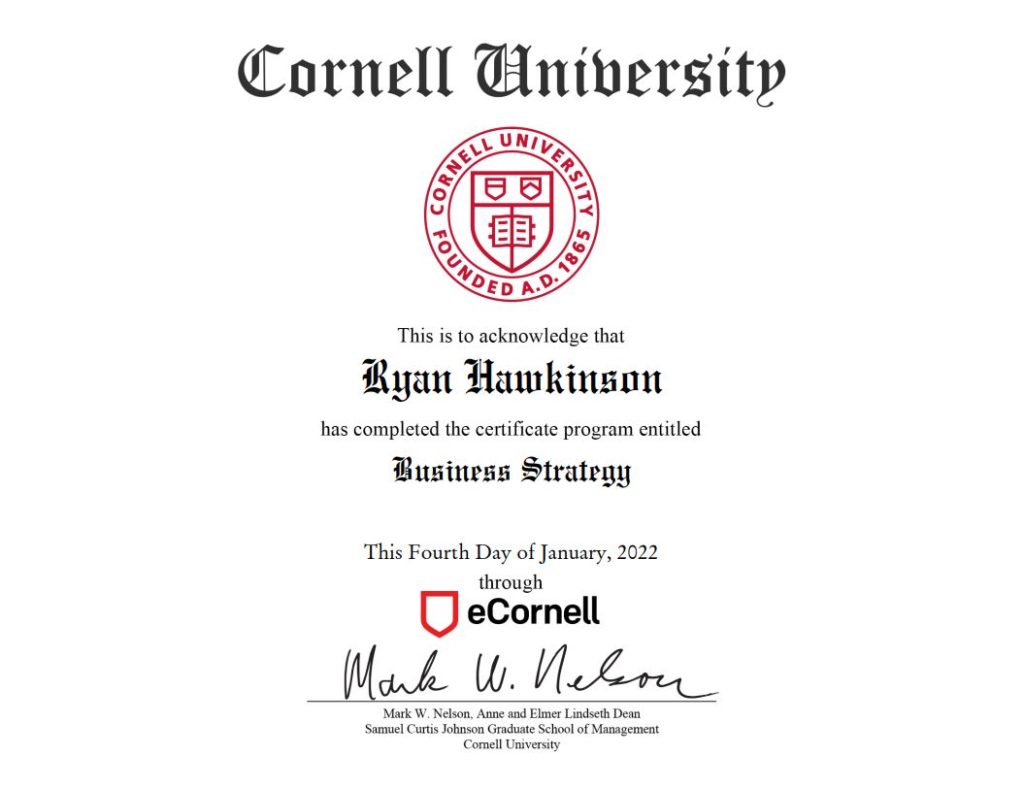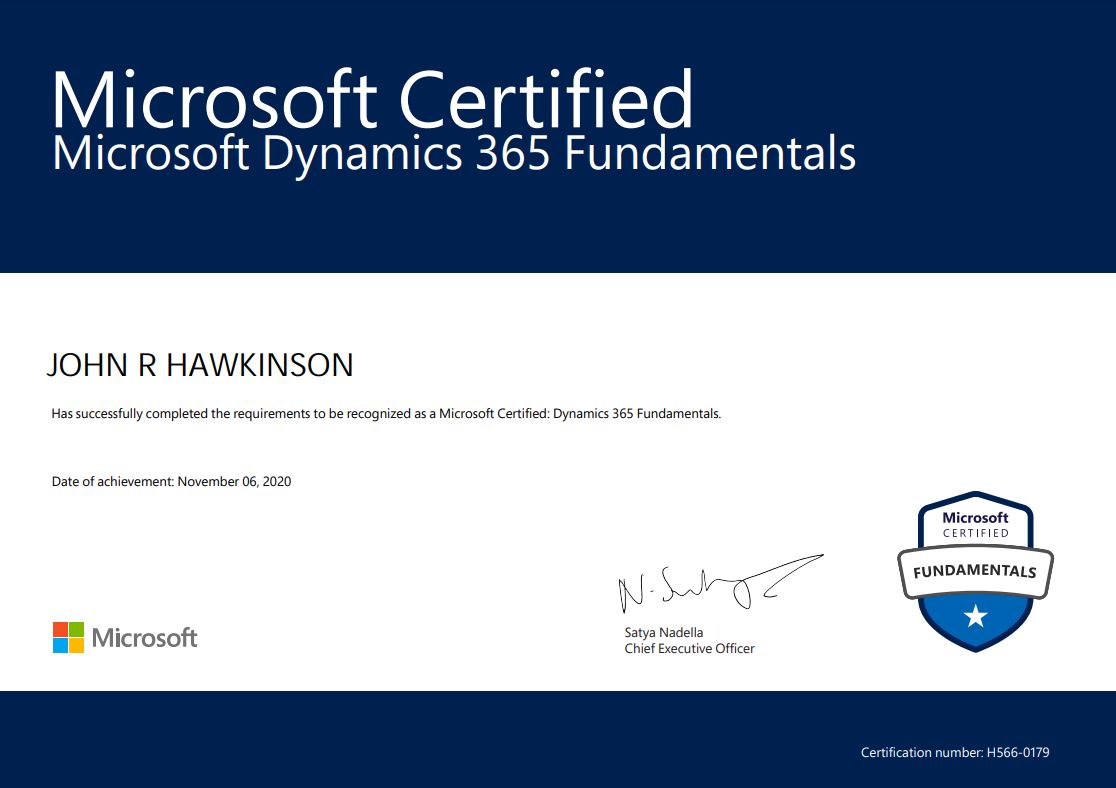Here we recap part 1 of the course.
Digital Experience | Intro To Course | Lesson Recap
Follow Me Elsewhere:
Play Video
Play Video
Awesome. Let’s recap this section and then we’ll talk about next steps before moving on to the next pillar. So in this section, we talked about the company experience and the various aspects involved like location, communication, the resources and services. Next, we talked about what we need to think about in order to design an experience and what experience design is. So we looked at all the different aspects that we want to include stakeholders and how we can engage them through emotions using things like consani engineering and that the whole thing is really focused on movement and moving stakeholders through the experience and keeping them engaged. And we talked about layering in the digital world and what devices and how they impact the digital experience. For the experience of our company, we talked about technology and its role and then how we can start to use things like automation and get insights into the experience that we’re offering. Last, we covered the experience economy and how it’s the economic stage that we’re in right now, how it’s all about serving emotions and how all companies are impacted by this experience economy. For the next steps in this section, there is a reflection in the workbook. Ask yourself the questions and go through the reflection and it’ll help you get some deeper insights about the things that we just talked about and how they might apply to your business and organization. Once you’re done, we’ll see you in the next pillar.
Related Content
More Content
Marketing Manager Software helps businesses create successful marketing campaigns and projects. It automates tedious tasks and helps streamline complex processes, allowing you to focus on the creative side of your marketing strategy. With this software, you
Discover the crucial significance of data backup in shaping a seamless and secure digital experience in today’s rapidly evolving business landscape. Learn how understanding the whereabouts of your data, evaluating data restoration procedures, and ensuring business
Content Management System (CMS) is like a Swiss Army Knife for your website. It can help you easily manage your website content, ensuring it looks great and runs smoothly. You never have to worry about getting
Plugins are a crucial component of the WordPress ecosystem for WordPress websites to function. Using plugins allows you to save time and access some unique features. Plugins may be quickly installed and set up, saving developers
In this article, we will discuss 15 email marketing best practices that will help you optimize your campaigns and achieve better results. Stay with us for more directions and details.
Discover five remarkable examples of email marketing campaigns that stand out for their innovation, personalization, and compelling content. From personalized birthday surprises to interactive product showcases, creative storytelling, timely seasonal promotions, and automated personalized recommendations, these
Email marketing is one of the most effective digital tools. Here are a few essential features to look for when choosing email marketing software.
